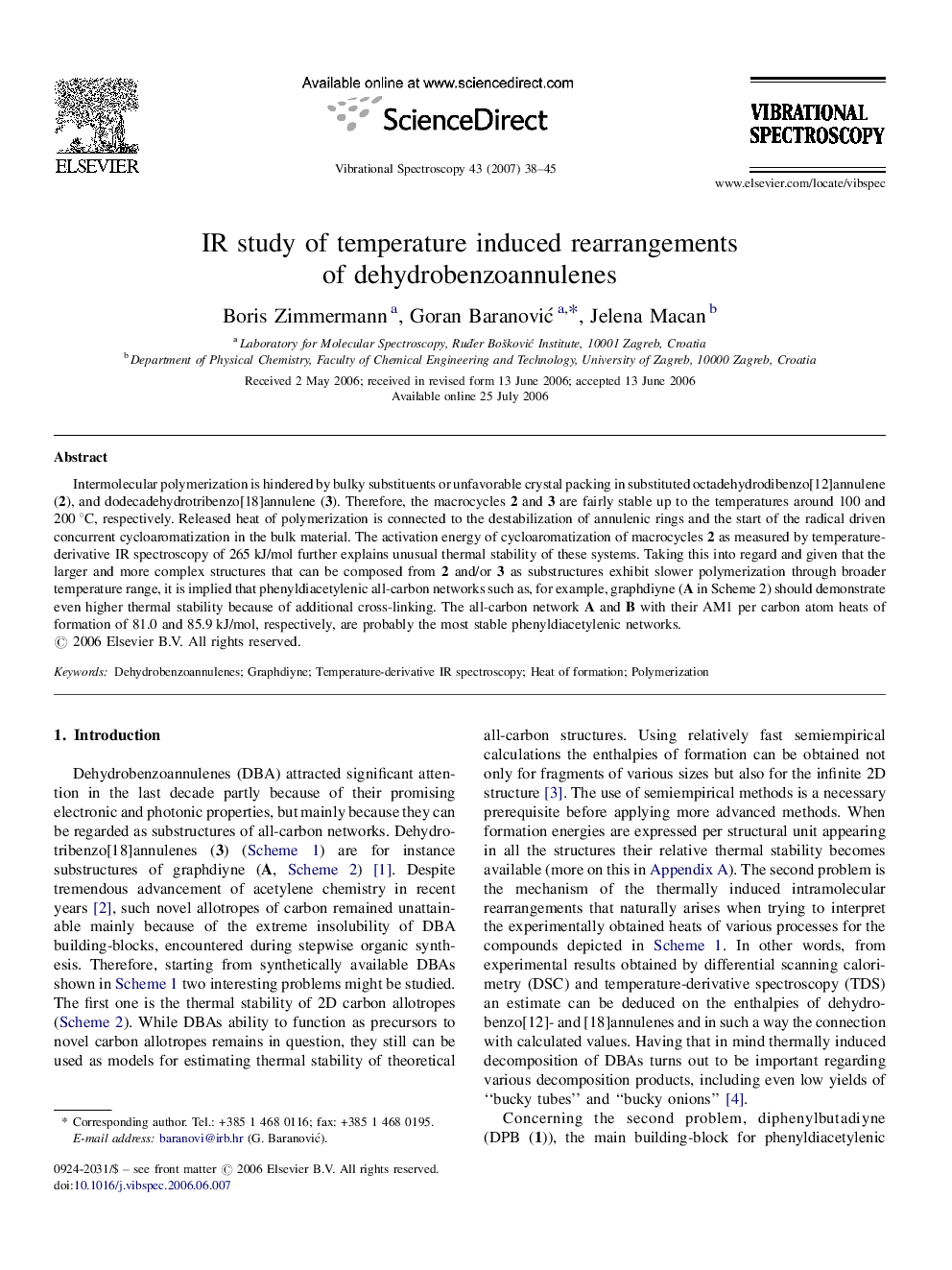| Article ID | Journal | Published Year | Pages | File Type |
|---|---|---|---|---|
| 1252310 | Vibrational Spectroscopy | 2007 | 8 Pages |
Intermolecular polymerization is hindered by bulky substituents or unfavorable crystal packing in substituted octadehydrodibenzo[12]annulene (2), and dodecadehydrotribenzo[18]annulene (3). Therefore, the macrocycles 2 and 3 are fairly stable up to the temperatures around 100 and 200 °C, respectively. Released heat of polymerization is connected to the destabilization of annulenic rings and the start of the radical driven concurrent cycloaromatization in the bulk material. The activation energy of cycloaromatization of macrocycles 2 as measured by temperature-derivative IR spectroscopy of 265 kJ/mol further explains unusual thermal stability of these systems. Taking this into regard and given that the larger and more complex structures that can be composed from 2 and/or 3 as substructures exhibit slower polymerization through broader temperature range, it is implied that phenyldiacetylenic all-carbon networks such as, for example, graphdiyne (A in Scheme 2) should demonstrate even higher thermal stability because of additional cross-linking. The all-carbon network A and B with their AM1 per carbon atom heats of formation of 81.0 and 85.9 kJ/mol, respectively, are probably the most stable phenyldiacetylenic networks.
